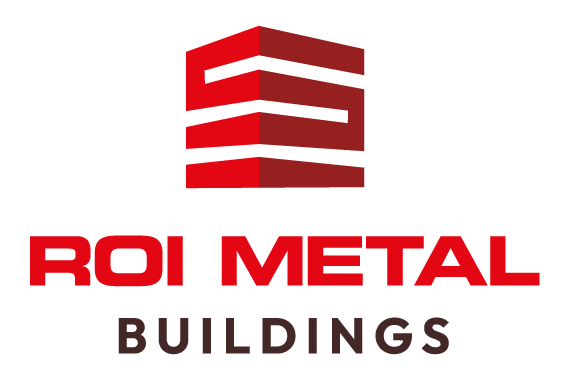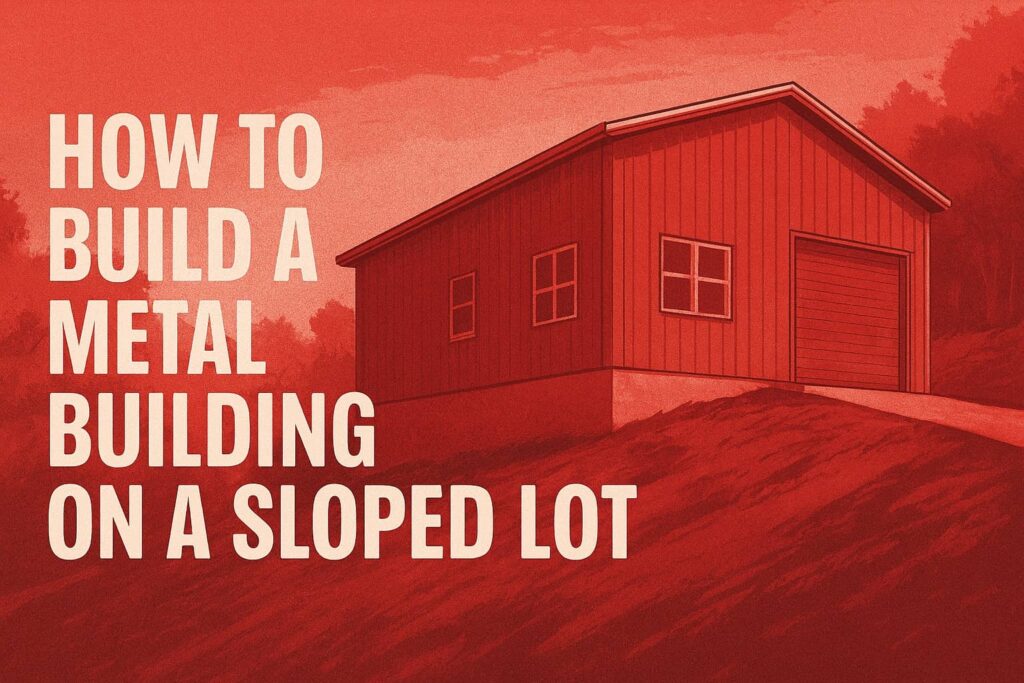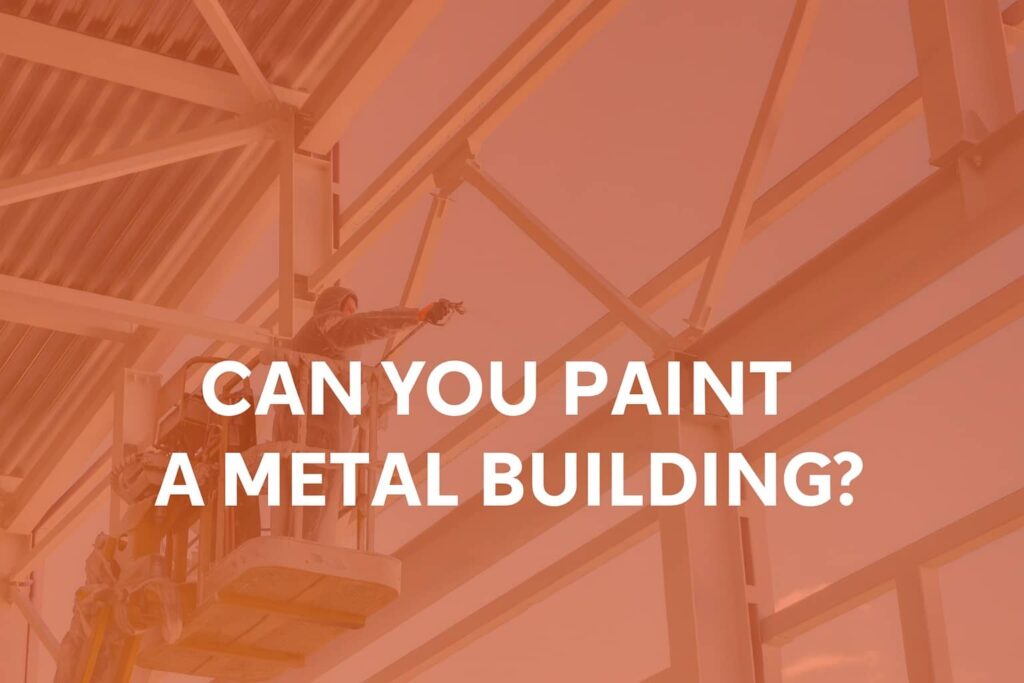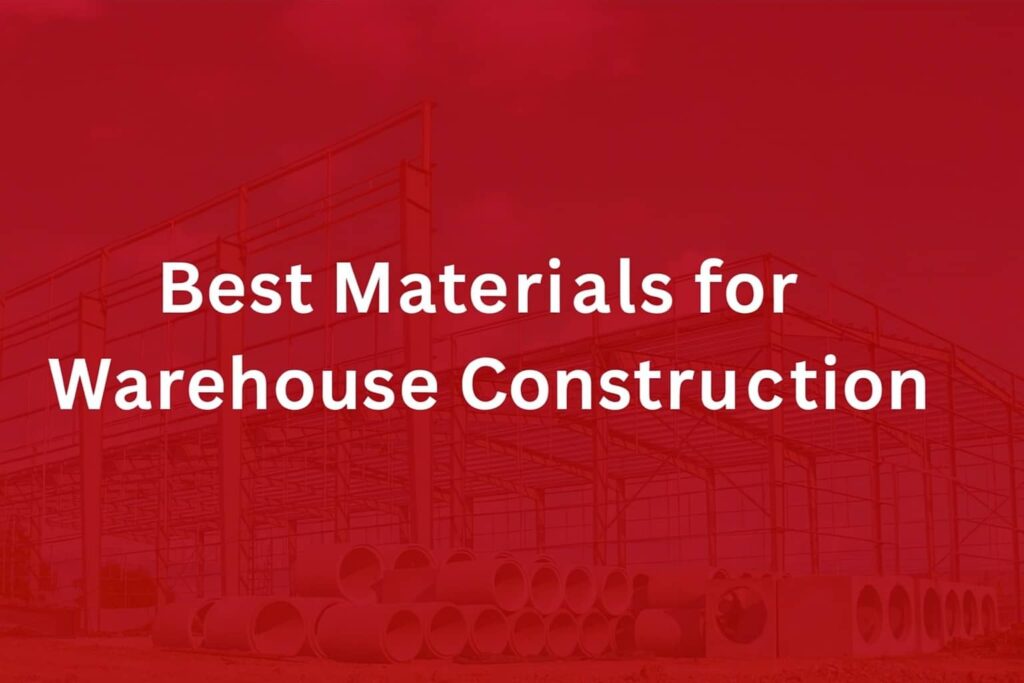Constructing a private metal equestrian building involves more than just erecting walls and a roof; it’s about ensuring you’ve planned for every expense from start to finish. When imagining your ideal setup where your horses are both safe and comfortable, it’s crucial to understand each cost component clearly right from the beginning. Transparency in calculating these expenses helps avoid financial surprises later on.
However, while primary construction costs like materials and labor are straightforward to estimate, many hidden expenses can quickly add up. These can range from permit fees that fluctuate based on location to preparing the land for construction, connecting essential utilities, and unforeseen drainage solutions during rainy seasons. Thorough research into actual project examples shows these are necessary considerations that shape your overall budget. Knowing these helps ensure your investment is not only wise but also well-prepared for any unexpected challenges along the way.
This article is the next of our new series about private residence metal equestrian buildings. Last week we wrote an article detailing the safety considerations for equestrian buildings. Stay tuned over the coming weeks as we take a deep dive into these facilities. If you’ve followed our articles in the past, you know the value that’s hidden within these articles. If you’re planning on adding a private equestrian building to your property, look no further than ROI Metal Buildings for all of the crucial information to get started!
The cost of constructing a private metal equestrian building varies based on factors such as size, location, and customization options. For example, building an 80’x200′ steel equestrian arena may range between $304,000 to $459,200 considering materials and construction costs. It’s crucial to consider these factors and obtain quotes from local contractors to get a more accurate idea of pricing for your specific project.
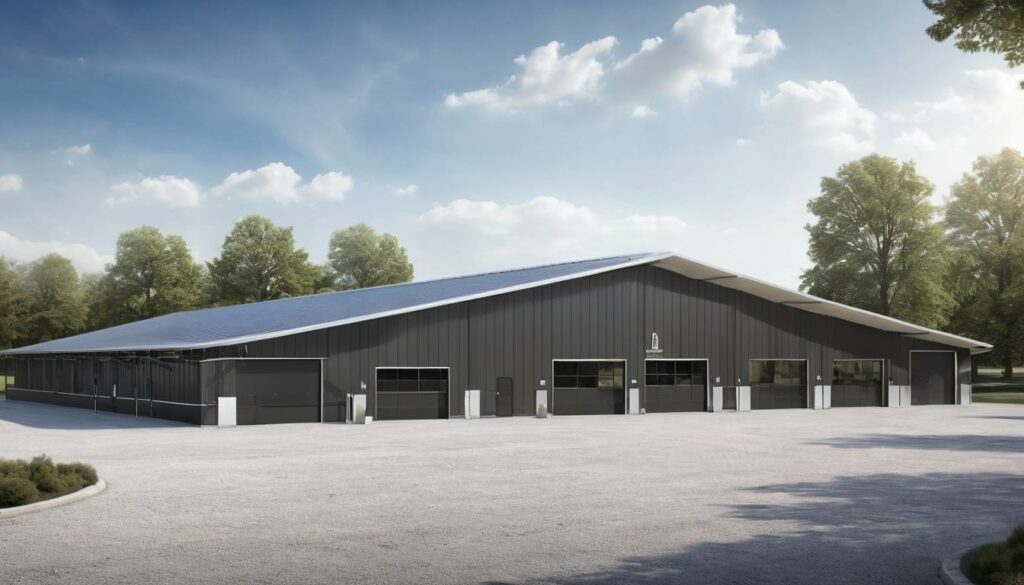
Hidden Costs of Equestrian Buildings
When planning the construction of an equestrian building, it’s crucial to consider not only the obvious expenses but also the concealed costs. Permit fees are one such hidden cost. These fees vary greatly depending on your location and can range from $500 to several thousand dollars. Researching and accounting for these fees in your budget is vital to avoid unexpected financial strain during the building process.
Aside from permit fees, site preparation is another significant cost that requires careful consideration. This includes tasks such as grading and leveling the land, which can add an additional $1,000 to $10,000 to your expenses depending on the complexity of the terrain. If you’re faced with uneven or challenging landscapes, these costs can rise steeply. Thinking ahead and factoring in these expenses will prevent any unpleasant surprises later on.
Additionally, don’t overlook utility connections when estimating your budget. The cost of connecting your equestrian building to water, electricity, and sewage services varies between $2,000 and $20,000, depending on the location of existing infrastructure and the specific requirements of your property. Failing to account for these expenditures can lead to overspending and unnecessary financial strain.
Consider these hidden costs as the unexpected twists and turns of a winding trail while horseback riding – unforeseen obstacles that demand careful navigation and forethought.
Furthermore, anticipate unexpected expenses such as drainage solutions during rainy seasons. Addressing drainage concerns may require an additional investment of up to $5,000, especially if the chosen location is prone to flooding or water accumulation.
These hidden costs can significantly impact the overall expenses associated with constructing an equestrian building. While they may not always be immediately apparent, accounting for these expenses in your initial budget planning is essential for a smooth and financially secure building process.
Understanding the potential financial intricacies involved in constructing an equestrian building sheds light on how critical detailed estimation is for a prosperous development journey. Now, let’s dive into estimating overall construction expenses.
Estimating Overall Construction Expenses
When calculating the total cost of constructing a metal equestrian building, various factors such as material prices, labor costs, and customization requirements need to be taken into account. One essential aspect to keep in mind is the size of the building, as this significantly impacts the overall expenses.
For instance, a standard 80’x200′ equestrian arena generally costs between $11.00 and $12.70 per square foot for materials alone, totaling an estimated $176,000 to $203,200. Additionally, labor costs are typically between $6 to $10 per square foot, adding an additional $68,000 to $130,000 to your budget. When factoring in both material and labor costs, the entire project can range from approximately $304,000 to $459,200.
It’s crucial to recognize that these estimates can fluctuate based on several variables. Location plays a significant role, impacting both material and labor costs. For example, areas with higher living expenses typically have higher labor rates. Regional differences in material availability and pricing can affect the overall cost as well.
Furthermore, customization needs can substantially influence the final expense of the project. Advanced features such as insulation, climate control systems, or specialty finishes can significantly inflate the cost. It’s important to carefully consider your specific customization requirements and factor them into your budget to ensure an accurate estimation of expenses.
Understanding the key components that contribute to overall construction expenses provides insight into the complexities involved in budgeting for a metal equestrian building. Let’s further dive into how location and customization needs impact these costs.
Having grasped the intricate web of factors influencing construction expenses, it’s time to explore how choosing the right building size tailored to your unique needs is pivotal in optimizing both functionality and cost-effectiveness.
Choosing the Right Building Size
When it comes to deciding on the size of your equestrian building, several factors come into play. The size is closely tied to its intended use and, ultimately, the total cost. For instance, a larger building tends to have a lower cost per square foot. This means that while the upfront investment may be higher for a larger building, the cost per square foot is likely to be more economical.
Let’s break this down further. Consider two hypothetical buildings: one measuring 60’x100′, while the other is 80’x200′. The smaller building may cost around $8.50 per square foot for materials, while the larger one could be closer to $11.00 per square foot.
In essence, considering your needs is crucial when deciding on the size of your equestrian building. A larger arena provides more space for training and events, offering flexibility and room for growth. However, it’s important to bear in mind that larger buildings come with higher overall prices.
In addition to accommodating your current needs, it’s wise to think about potential future requirements. While a smaller arena might seem sufficient now, it’s worth considering whether it will still meet your needs as your activities and operations expand. Investing in a larger building from the start can save you from having to retrofit or expand an existing structure later on.
As with many significant decisions, there’s often a delicate balance between immediate costs and long-term benefits. It’s important to assess not just your present needs but also how those needs may evolve over time. By doing so, you can make an informed choice that aligns with both your current budget and future aspirations.
The size of your equestrian building isn’t just about its physical dimensions—it’s about creating a space that supports your equestrian activities and contributes positively to your overall operations. Let’s now explore how different building sizes cater to various equestrian needs and usage scenarios.
Materials, Finishing, and Accessories
When constructing your metal equestrian building, the choice of materials is crucial. Steel, known for its exceptional durability and low maintenance, is often the preferred material for these structures. It typically costs around $5 to $10 per square foot, offering an economical choice for long-term use. Steel not only withstands the wear and tear associated with housing horses but also provides excellent protection against the elements.
Finishing touches can transform your structure. Paint not only adds aesthetic appeal but also acts as a protective layer against rust and corrosion. Quality paint applications can enhance both the beauty and longevity of your building. Similarly, investing in solid flooring options like concrete or rubber provides comfort for the horses and ease of maintenance for owners or stable hands. When it comes to lighting, consider energy-efficient options that effectively illuminate the space without significantly increasing utility bills. These finishing touches typically add $2 to $4 per square foot to the overall cost but are essential for enhancing the usability and attractiveness of your building.
Now, let’s turn our attention to essential accessories. A well-designed ventilation system is vital to maintain good air quality within the building by keeping fresh air circulating and removing harmful particles or odors. Installing a well-designed ventilation system may cost between $3,000 and $8,000, depending on the size of your building and the system’s specifications.
For horse stables or barns, a tack room provides storage for all necessary equipment such as saddles, bridles, and grooming supplies. This space usually costs around $1,000 to $3,000, depending on the size and features you require.
Additionally, invest in a well-designed wash bay to ensure proper cleaning and grooming of your horses. These areas can range from $5,000 to $15,000 based on their size, drainage systems, and usage needs.
Understanding the importance of each component of building construction is crucial to ensuring that every part of the building serves its purpose efficiently while adding value to your investment. By choosing durable materials, thoughtful finishes, and essential accessories, you’ll create a functional and pleasing environment for both you and your horses.
Now that we’ve laid down the foundation for constructing a top-notch equestrian building, let’s saddle up and explore the critical considerations for quality insulation.
Quality Insulation Considerations
When constructing a private metal equestrian building, one often overlooked but incredibly important aspect is insulation. Whether it’s for a horse stable, riding arena, or tack room, quality insulation can greatly impact the overall functionality and energy efficiency of the structure. Proper insulation is crucial for maintaining a comfortable environment for both horses and humans, as well as for ensuring optimal energy efficiency.
There are various types of insulation available in the market, each with its own set of benefits and costs. For instance, foam board insulation typically ranges between $1.50 and $3.50 per square foot, while spray foam insulation might cost between $2 and $3 per square foot but offers superior sealing properties.
When choosing insulation for your metal equestrian building, it’s important to consider not only the initial cost but also the long-term benefits. Good insulation can significantly reduce heating and cooling costs by up to 50%, making the initial investment well worth it in the long run.
The type and thickness of insulation you choose can depend on factors such as the climate in your region, the intended use of the building, as well as your budget. A well-insulated building offers numerous advantages beyond just temperature regulation.
For instance, effective insulation helps regulate moisture levels within the structure, which is especially important in horse stables where high humidity levels can lead to respiratory issues in horses and deterioration of equipment. Moreover, proper insulation also aids in soundproofing, reducing noise from both inside and outside the building.
Additionally, insulation plays a significant role in preserving the structural integrity of the building. By minimizing temperature fluctuations and condensation buildup, insulation helps prevent damage to the building materials over time.
It’s clear that incorporating high-quality insulation into your metal equestrian building is an essential investment that offers a multitude of benefits including energy efficiency, temperature regulation, moisture control, soundproofing, and structural preservation. Proper insulation ensures a comfortable environment for both humans and animals while contributing to the longevity and efficiency of the building.
As you navigate through the process of constructing your private metal equestrian building, another crucial aspect is finding the right contractor to bring your vision to life seamlessly. The next section will provide valuable insights into selecting a contractor who aligns with your specific requirements.
Contractor Selection Tips
Selecting a contractor for your metal equestrian building involves much more than just choosing the lowest bid. Your contractor is the linchpin that holds your project together, so take your time finding the right one. A quality job is not only about how well the building looks when it’s completed, but also how durable and safe it is.
Get Multiple Quotes
Don’t settle for the first quote you receive. Reach out to multiple contractors to compare and contrast their offers. This provides you with a clear insight into what the standard pricing is in your area, protecting you from overpriced deals or unusually low bids which may signal potential issues.
Verify Credentials
Once you have a few quotes lined up, dig into each contractor’s background and verify their credentials. Are they licensed and insured? Do they have any certifications or accreditations? It’s crucial to ensure that the contractor you choose complies with all the necessary legal and industry standards to avoid any liability concerns down the line.
Ask for Customer References
You wouldn’t buy a product without reading reviews, right? Similarly, ask your potential contractors for customer references. Speaking with previous clients gives you valuable insights into the contractor’s work ethic, communication style, and ability to stay within budget and timelines.
Keep in mind: Visiting previous projects they’ve completed can provide a real sense of their craftsmanship and attention to detail.
Be Wary of Unusually Low Bids
We all want to make smart financial decisions, but unusually low bids often come with a price—quality compromise. In an effort to win your project, some contractors might cut corners on materials or workmanship to keep their costs down, potentially jeopardizing the integrity and safety of your equestrian building.
Look for Experience with Equestrian Facilities
Building equestrian facilities requires specialized know-how due to unique requirements, such as arena footing and stall safety. Ensure that the contractor you select has experience in constructing equestrian buildings. This familiarity ensures that they understand the specific needs of your project, ensuring that they are well-equipped to deliver a structure tailored to your exact specifications.
By following these tips during your selection process, you’re not just choosing a contractor; you’re safeguarding the success of your metal equestrian building project and ensuring both its quality and longevity.
Budget-Friendly Add-Ons
When constructing an equestrian arena, striking the right balance between functionality and cost is crucial. It’s essential to consider how you can enhance the usability of your arena without straining your budget. Let’s explore some practical and cost-effective add-ons that can significantly improve your arena.
Portable Stalls: Portable stalls are a great addition to any equestrian arena. They provide flexibility and convenience, allowing you to create temporary holding areas for horses during events or when additional space is required. The cost of portable stalls can range from $1,000 to $3,000 each, making them a relatively affordable option compared to traditional permanent stalls.
LED Lighting Fixtures: Simple yet effective lighting solutions using LED fixtures can be a game-changer for your equestrian arena. LED lights not only provide improved visibility but also reduce energy costs in the long run. By investing in energy-efficient lighting, you can enhance the overall functionality of the arena while minimizing operating expenses.
Rubber Mats: Consider adding rubber mats to the walkways and stalls within your equestrian arena. These mats, which typically cost around $2 to $4 per square foot, offer several benefits. They improve safety by providing traction for both horses and handlers, reduce the risk of injury due to slipping, and enhance overall comfort for the animals. Additionally, they contribute to sound dampening, creating a quieter and more peaceful environment within the arena.
Summary: Cost of Constructing a Private Metal Equestrian Building
Incorporating these budget-friendly add-ons allows you to optimize the usability and safety of your equestrian arena without breaking the bank. It’s all about finding practical solutions that enhance the overall experience for both horses and riders while managing costs effectively.
When it all comes down to it, safety for the horses and the riders is the most important aspect for metal equestrian buildings. If you would like further assistance or guidance regarding metal equestrian buildings, feel free to contact us today at 865-316-9009. Also, if you like our content and want to stay up to date, follow us on Facebook at https://www.facebook.com/roimetalbuildings!
